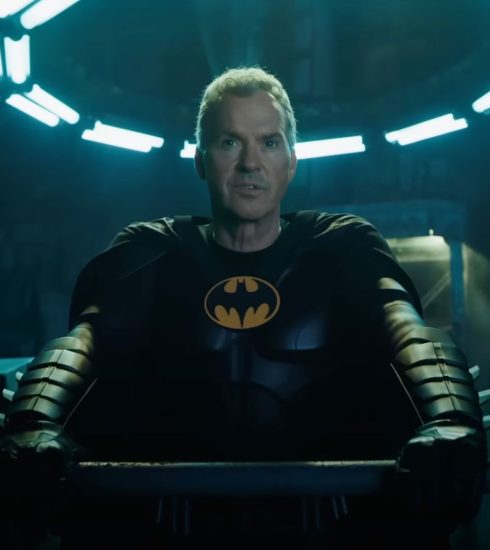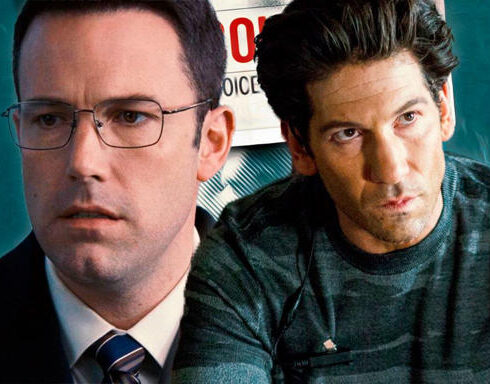Watch of the Week: Avatar: The Last Airbender
Netflix’s live-action Avatar: The Last Airbender isn’t the flop that many were expecting from a streamer with a string of failed animation adaptations, and it’s certainly miles ahead of M. Night Shyamalan’s failed theatrical version, but it doesn’t really stand out on its own merits. In the current era of TV, IP reigns supreme, making memorable storytelling more of a suggestion than a priority, and Avatar: The Last Airbender joins the likes of Wednesday, The Rings of Power, and endless other series as serviceable (if not artistically significant) content.
![]()
For those who weren’t glued to their TVs in the mid-to-late 2000s and didn’t enjoy Nickelodeon’s acclaimed cartoon, Avatar: The Last Airbender takes place in a mystical, fantastical world. Part of the population, known as benders, can control one of four elements: earth, air, fire, and water. However, the powerful Avatar can bend all four, and they are tasked with maintaining balance in the world. One hundred years before the series takes place, this order was disrupted by the Fire Nation, who wiped out the Air Nomads in an attempt to kill the Avatar and attain worldwide dominance. Their plan failed, though, as the 12-year-old Avatar, Aang (Gordon Cormier), had fled before the invasion, only to get trapped in ice for a century as the war was waged.
A lot is going on in Avatar: The Last Airbender and the show stretches itself thin. The original series had 20 episodes per season; this version has eight. Though obviously not every storyline is included in this adaptation, it certainly crams in a large percentage of plot points. Some have more room to breathe than others. Avatar’s first episode is the series’ longest, and it comprises about three of the original show’s episodes; meanwhile, episode two stretches out the story of a single animated episode. A few Earth Kingdom escapades feel especially Frankenstein-ed together, with the main trio splintering into their own plots while Zuko and his trusted Uncle Iroh (Paul Sun-Hyung Lee) are on their own quest, and a trip to the Spirit World provides a strange detour. Things don’t quite coalesce, and it comes off as blatant box-checking so that this character or that plot point gets included, preemptively staving off potential fan disappointment.
![]() Avatar also largely excels at bringing bending to life. It takes a lot of skill and planning to make people wielding CGI elements look realistic in any capacity, and the show succeeds. As in the cartoon, each element requires a unique fighting style, and the actors and stunt team really bring that to life. Liu’s Zuko mixes martial arts with firebending to make for some arresting fight scenes and Kiawentiio’s fluid motions when waterbending look entirely natural. The visual effects that create this fantasy world are undoubtedly impressive, from the construction of massive cities to the design of its creatures (Appa the sky bison looks fantastic down to the smallest detail). There are a handful of painfully obvious green screens in the Fire Nation and when the gang is travelling by air, but they thankfully don’t factor in much.
Avatar also largely excels at bringing bending to life. It takes a lot of skill and planning to make people wielding CGI elements look realistic in any capacity, and the show succeeds. As in the cartoon, each element requires a unique fighting style, and the actors and stunt team really bring that to life. Liu’s Zuko mixes martial arts with firebending to make for some arresting fight scenes and Kiawentiio’s fluid motions when waterbending look entirely natural. The visual effects that create this fantasy world are undoubtedly impressive, from the construction of massive cities to the design of its creatures (Appa the sky bison looks fantastic down to the smallest detail). There are a handful of painfully obvious green screens in the Fire Nation and when the gang is travelling by air, but they thankfully don’t factor in much.
The series is good at depicting its action, and it moves along with its story at a breakneck pace. We get from the South Pole to the North Pole in the span of eight episodes, and though it doesn’t always make the most narrative sense (or sometimes any at all), the show doesn’t stall. It’s watchable, easy entertainment, and sometimes it seems like the show is expecting you not fully to be paying attention. Every character has a grating tendency to punctuate story beats with obvious comments, from Katara exclaiming, “Ugh, I don’t get it!” after messing up a water-bending move to Aang saying, “I’m really starting to see what kind of person [Zuko] is” after three episodes of interactions. The pattern gets increasingly eye-rollingly unforgivable, and it all but eclipses the show’s meaningful dialogue.
![]() That issue shines a light on a bit of an open-ended question: who is this series for? The original cartoon was for kids but held weighty themes, packaged and presented in a way that appealed to adults a la Harry Potter. The live-action series stars young actors and has juvenile characters, but its graphic action and overly dense plotting make it feel geared toward a slightly older demographic. It’s clear that Netflix wants to exploit the goodwill that countless fans have for the animated series, and the new series incorporates many of the aspects that made the original so popular, but it rarely—if ever—meets the standards set by the cartoon. Some scenes are recreated and repurposed in painstaking detail, from dialogue to blocking to camera shots, but that doesn’t add anything. There are ways to translate an animated series to the live-action medium, but the show doesn’t seem all that interested in exploring them. As a result, Avatar: The Last Airbender is fine, just fine, not stomping on the memory of its source material but not doing anything worthwhile with it.
That issue shines a light on a bit of an open-ended question: who is this series for? The original cartoon was for kids but held weighty themes, packaged and presented in a way that appealed to adults a la Harry Potter. The live-action series stars young actors and has juvenile characters, but its graphic action and overly dense plotting make it feel geared toward a slightly older demographic. It’s clear that Netflix wants to exploit the goodwill that countless fans have for the animated series, and the new series incorporates many of the aspects that made the original so popular, but it rarely—if ever—meets the standards set by the cartoon. Some scenes are recreated and repurposed in painstaking detail, from dialogue to blocking to camera shots, but that doesn’t add anything. There are ways to translate an animated series to the live-action medium, but the show doesn’t seem all that interested in exploring them. As a result, Avatar: The Last Airbender is fine, just fine, not stomping on the memory of its source material but not doing anything worthwhile with it.
Boluwatife Adesina is a media writer and the helmer of the Downtown Review page. He’s probably in a cinema near you.






